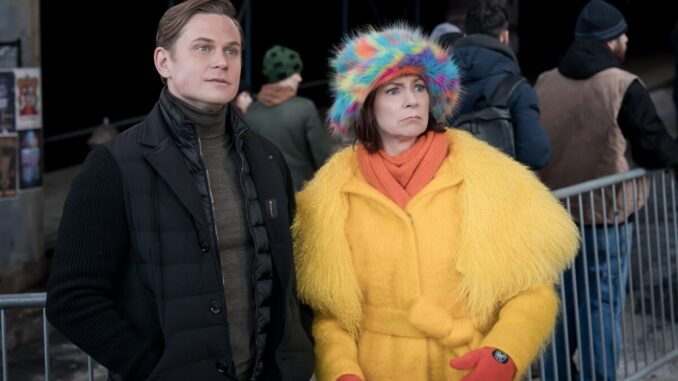
The Glorious Disruption: Why Elsbeth’s Quirky Tone Makes It One of Network TV’s Brightest Procedurals
In the vast, often grim, landscape of network television procedurals, where stoic detectives grapple with the darkness of humanity and every urban alley seems perpetually rain-slicked, a vibrant anomaly has emerged. Elsbeth, a spin-off from The Good Wife and The Good Fight, doesn’t just stand out; it practically cartwheels onto the screen, a beacon of effervescent intelligence amidst the usual somber fare. Its secret weapon, the very essence that elevates it from a mere competency to a genuine delight, is its irrepressibly quirky tone. This deliberate embrace of the eccentric, both in its titular character and its overall aesthetic, isn’t just a stylistic choice; it’s a subversive act that reimagines what a procedural can be, rendering it one of the brightest and most invigorating shows on television.
At the heart of Elsbeth‘s unique charm is, of course, Elsbeth Tascioni herself. Carrie Preston’s portrayal of the perpetually cheerful, seemingly ditzy lawyer-turned-observer is a masterclass in disarming genius. Elsbeth’s quirkiness is multi-layered: from her anachronistic, often clashing sartorial choices – a vibrant scarf here, a quirky hat there – to her socially unconventional yet acutely observant demeanor. She asks seemingly off-topic questions, makes unexpected analogies, and often appears utterly lost in the social graces of her New York City surroundings. Yet, beneath this veneer of delightful oddity lies a mind sharper than any surgical scalpel, capable of connecting the most disparate dots and exposing the villain hiding in plain sight. This character, who approaches murder investigations with the wide-eyed wonder of a tourist discovering a new city, immediately subverts the expectation of the jaded, troubled detective. Her quirkiness isn’t a flaw to overcome, but her superpower – a disarming cloak that allows her to see truths others, mired in their cynicism or conventional thinking, completely miss.
However, the eccentricity of Elsbeth extends far beyond its titular character, permeating the show’s entire visual and narrative fabric. Unlike many procedurals that lean into a muted, almost desaturated color palette to emphasize seriousness, Elsbeth bathes New York City in bright, almost cinematic hues. The world Elsbeth inhabits is vibrant, often sun-drenched, and alive with character. This visual cheerfulness is mirrored in its auditory landscape, often featuring an upbeat, playful score that accentuates the lighthearted yet intricate dance of detection. Furthermore, the show often employs the “howcatchem” format, revealing the perpetrator to the audience at the beginning of each episode. This narrative choice, while seemingly counter-intuitive for a mystery, is brilliant in its execution. It shifts the focus from “who did it” to “how will Elsbeth figure it out,” allowing the audience to savor the intricate, often humorous, process of her investigation. The quirky joy isn’t in the reveal of a shocking twist, but in watching Elsbeth’s unique thought process unfold, her observations seemingly random until they snap into perfect, compelling clarity.
This deliberate embrace of the unconventional serves a vital purpose: it makes Elsbeth an antidote to the pervasive cynicism and grim realism that often defines the genre. In an era where “prestige” television often equates to dark themes and moral ambiguity, Elsbeth offers a refreshing alternative. It proves that a show can be intelligent, intricately plotted, and deeply satisfying without sacrificing joy or a sense of whimsical optimism. The quirkiness creates a liberating viewing experience; it’s a show that doesn’t demand you stew in the darkness of human depravity, but invites you to delight in the triumph of ingenious observation. It demonstrates that incisive intellect needn’t be cloaked in tortured angst, but can instead sparkle with an almost childlike wonder, making the intellectual puzzle all the more engaging.
In conclusion, Elsbeth‘s quirky tone is far more than a charming affectation; it is the strategic heart of its brilliance. Through its wonderfully eccentric protagonist, its vibrant aesthetic, and its playful narrative structure, the show defies the conventions of its genre, proving that the procedural format still has fertile ground for innovation and delight. In a television landscape often characterized by brooding anti-heroes and relentless darkness, Elsbeth stands as a joyful, intelligent, and utterly unique testament to the power of seeing the world – and solving its mysteries – with a genuinely bright, albeit wonderfully askew, perspective. It is, without question, a glorious disruption and one of network TV’s brightest procedural stars.
